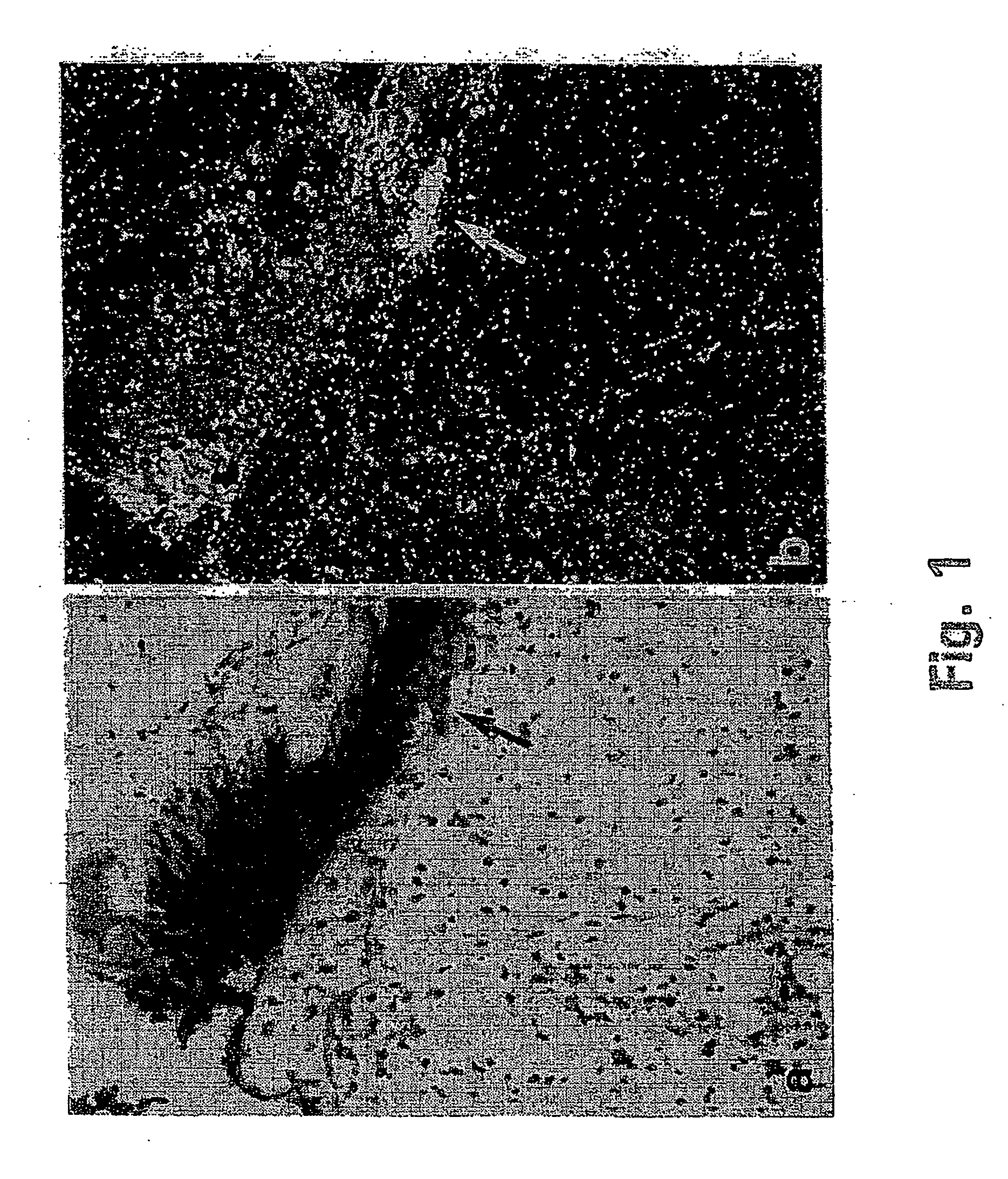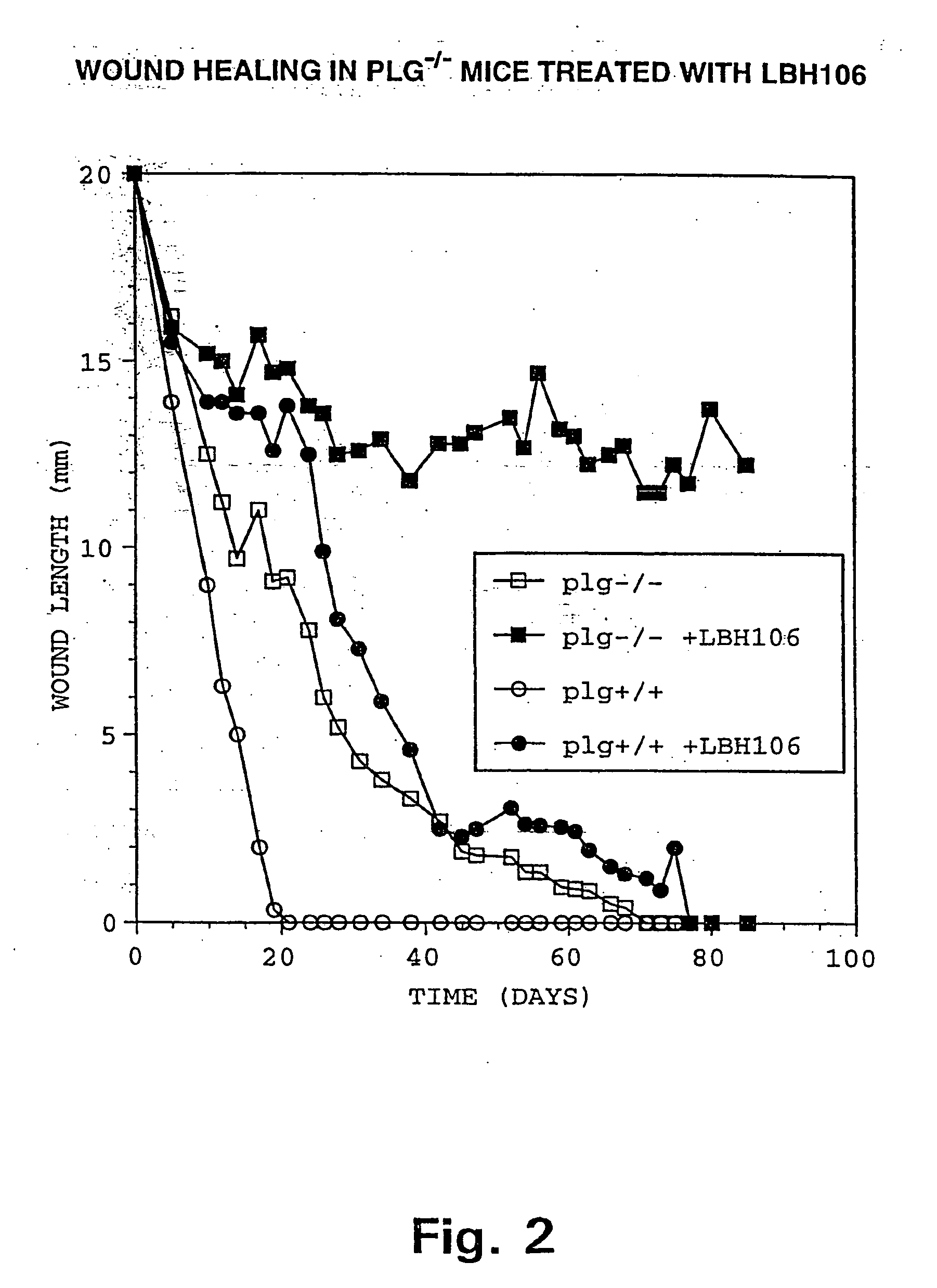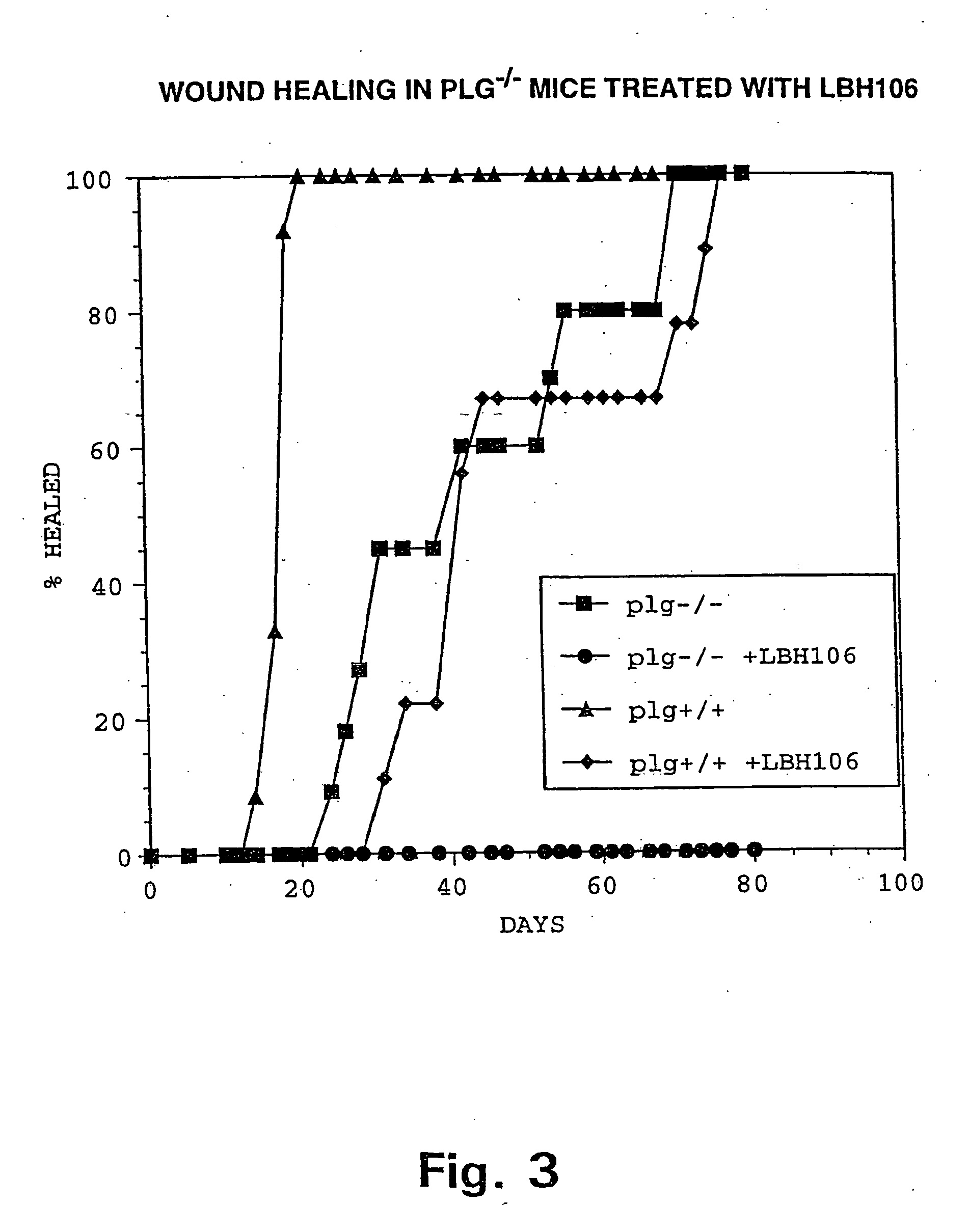Inhibition of invasive remodelling
a remodelling and invasive technology, applied in the field of inhibition of invasive remodelling, can solve the problems that the prior art methods using topical application do not enable, let alone suggest, tumours, and cannot only be gained, and the systemic aprotinin treatment could block the formation of metastases, and achieve the effect of effective serum concentration, effective dosage regimen, and high importan
- Summary
- Abstract
- Description
- Claims
- Application Information
AI Technical Summary
Benefits of technology
Problems solved by technology
Method used
Image
Examples
example 1
Wound Healing in Plg− / − Mice Treated with a Metalloprotease Inhibitor.
[0154] In this example, mice totally deficient in plasmin were treated systemically with a potent metalloprotease inhibitor. The model tested was wound healing. Successful wound healing was read as the complete closure of a skin incision.
Background:
[0155] Wound healing shares several features in common with tumour invasion. Thus the plasminogen / plasmin system as well as metalloproteases are found to be over expressed at the site of keratinocyte migration, and total deficiency of plasminogen / plasmin is associated with partially retarded keratinocyte migration and slower wound closure (Rømer, 1996).
[0156] The metalloprotease inhibitor Galardin™ inhibits a number of metalloproteases: Fibroblast interstitial collagenase (MMP-1), Ki=0.4 nM; 72 kd gelatinase A (MMP-2), Ki=0.5 nM; stromelysin-1 (MMP-3), Ki=30 nM; neutrophil interstitial collagenase (MMP-8), Ki=0.1 nM; 92 kd gelatinase B (MMP-9), Ki=0.2 nM). In cont...
example 2
Implantation in Plg− / − Mice Treated with a Metalloprotease Inhibitor.
[0172] In this example, plasminogen deficient mice were treated systemically with a potent metalloprotease inhibitor. The model tested was embryo implantation. Successful implantation was read as the presence of viable embryos in the pregnant mice.
Background for the Model:
[0173] The mean time for onset of oestrus in a normal female mouse is 4 to 6 hours after onset of darkness. Ovulation occurs from 2 to 3 hours after the onset of oestrus. The female mouse only copulates during oestrus when ova are or are becoming ready for fertilisation. Since oestrus usually begins around midnight, mating is most common during the night hours, generally about 02:00. Evidence of successful mating is a vaginal plug, a coagulum of fluid from the vesicular and coagulating glands of the male, that occludes the vaginal orifice. Noon the day after mating is set as day 0.5 of gestation. The first of the zygote cleavages begins in th...
example 3
Inhibition of Mammary Gland Involution in Mice.
[0177] In this example post-lactating plasminogen deficient and wild-type mice were treated systemically with a potent metalloprotease inhibitor and the effect on mammary gland involution was assessed by weighing an excised gland after the normal involution interval.
Background:
[0178] After mice have given birth, the lactating mammary glands of the mother become considerably enlarged in order to supply sufficient milk for feeding her pups. When the pups are weaned after about 7-8 days, lactation ceases and the glands undergo an involution process to return to their normal size. This is a typical tissue remodelling process, in which urokinase plasminogen activator and metalloproteases both contribute to matrix degradation. The levels of urokinase, gelatinase A, stromelysins 1 and 3, and MT-MMP-1 all increase rapidly 3-4 days after lactation ceases.
Protocol:
[0179] After mice had given birth, the litter was taken away from the mothe...
PUM
| Property | Measurement | Unit |
|---|---|---|
| time | aaaaa | aaaaa |
| thickness | aaaaa | aaaaa |
| time | aaaaa | aaaaa |
Abstract
Description
Claims
Application Information
 Login to View More
Login to View More - R&D
- Intellectual Property
- Life Sciences
- Materials
- Tech Scout
- Unparalleled Data Quality
- Higher Quality Content
- 60% Fewer Hallucinations
Browse by: Latest US Patents, China's latest patents, Technical Efficacy Thesaurus, Application Domain, Technology Topic, Popular Technical Reports.
© 2025 PatSnap. All rights reserved.Legal|Privacy policy|Modern Slavery Act Transparency Statement|Sitemap|About US| Contact US: help@patsnap.com



